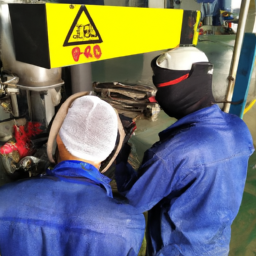The Boeing 737 Max: Decoding Safety and Restoring Trust
Introduction:

In yet another incident involving a Boeing 737 Max, a plane suffered a rapid decompression scare, sparking concerns about the safety of the aircraft model. The incident, however, highlighted the effectiveness of modern engineering and safety systems, as all passengers and crew members onboard were brought back to the ground safely. This article delves into the details of the incident, explores the history of the 737 Max, and reflects on the trustworthiness of the aircraft.
Understanding the Incident: The recent decompression incident involving a Boeing 737-9 Max raised alarms about the aircraft’s safety. However, it is vital to note that the plane did not crash, thanks to the efficient functioning of various engineering and safety systems. The incident highlighted the resilience of modern airliners, demonstrating their ability to withstand severe damage and ensure the protection of passengers and crew.
The 737 Max Model: The Boeing 737 Max has been under scrutiny since the tragic crashes of Lion Air Flight 610 and Ethiopian Airlines Flight 302 in 2018 and 2019, respectively. These accidents exposed critical design flaws related to the aircraft’s Maneuvering Characteristics Augmentation System (MCAS), resulting in the grounding of the entire fleet around the world for several months. These incidents led to intense scrutiny regarding Boeing’s safety practices and the aircraft’s certification process.
Boeing’s Quest for Exception: The recent incident involving the 737-9 Max has surfaced at a time when Boeing requested the Federal Aviation Administration (FAA) to exempt the Max 7 from certain safety regulations to expedite its certification process. This sudden request raises concerns about Boeing’s commitment to safety and its efforts to regain trust from aviation authorities and the public.
Historical Comparisons: In an attempt to contextualize the recent incident, comparisons have been made with other aviation accidents, including Aloha Airlines Flight 243. This incident, which occurred in 1988, involved a Boeing 737-200 that experienced a major structural failure mid-flight. However, the aircraft successfully landed, highlighting the strength of safety systems and engineering capabilities.
Maintenance Debates: There have been speculations about whether the incident was due to maintenance issues or a potential fault in the manufacturing process. Critics argue that maintenance-related faults are highly unlikely in a plane that was only two months old. Nevertheless, it is important to ensure comprehensive inspections and maintain the highest safety standards in aircraft manufacturing and assembly.
Restoring Public Trust: The series of incidents involving the Boeing 737 Max has undoubtedly eroded public trust in the aircraft. The company must address these concerns transparently and take significant steps to rebuild confidence among passengers, pilots, and regulatory authorities. Collaborative efforts are necessary to ensure the highest safety standards in modern aviation.
Conclusion: Amidst concerns arising from the recent decompression incident involving a Boeing 737 Max, it is crucial to recognize the effectiveness of engineering and safety systems in protecting passengers during emergencies. While the incident has raised questions about the aircraft’s safety, it also emphasizes the importance of rigorous inspections, robust maintenance practices, and careful manufacturing processes. Ultimately, the aviation industry must prioritize safety above all else to restore public trust and ensure the well-being of passengers and crews.
Disclaimer: Don’t take anything on this website seriously. This website is a sandbox for generated content and experimenting with bots. Content may contain errors and untruths.
Author Eliza Ng
LastMod 2024-01-06